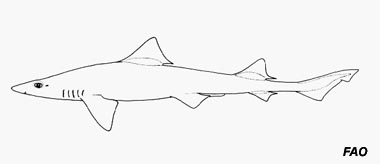
Mustelus californicus
This small, slender shark has a pointed snout and large oval eyes, and triangular fins with a lobed, asymmetrical caudal (tail) fin. Brownish gray on top and fading to a light underbelly, they usually grow to 46 inches long, but some females have been measured at 64 inches. They prefer the coastal waters of the eastern Pacific Ocean, usually in bays and along rocky shores, sometimes schooling with leopard sharks.
Order: Carcharhiniformes
Family: Triakidae
Genus: Mustelus
Species: californicus
Common Names
Common names of Mustelus californicus include grey or gray smooth-hound (English), grizjze toonhaai (Dutch), musola gris (Spanish), cazón mamón (Spanish), cazón gris (Spanish), emissole grise (French), and californisk hundhaj (Swedish).
Importance to Humans
Grey smooth-hound is taken in commercial fisheries for human consumption. It is also important as a gamefish.
Danger to Humans
This small shark is considered harmless to humans. According to the International Shark Attack File, there have been no reported attacks on humans attributed to this species.
Conservation
The status of this species is uncertain due to incomplete data; however, it is known to have low resilience. Even without fishing pressure, the species’ population size would require 14 years to double.
> Check the status of the grey smooth-hound at the IUCN website.
The IUCN is a global union of states, governmental agencies, and non-governmental organizations in a partnership that assesses the conservation status of species.
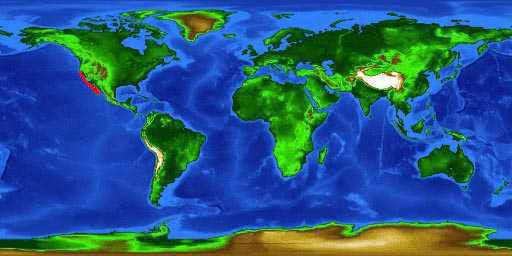
Geographical Distribution
The grey smooth-hound is found both inshore and offshore in the eastern Pacific Ocean from the Gulf of California to northern California (US).
Habitat
The grey smooth-hound is found in waters over the continental shelves and is very common in bays and rocky shores at depths of 6-150 feet (2-46 m). They are often found among schools of leopard sharks (Triakis semifasciata).
Biology
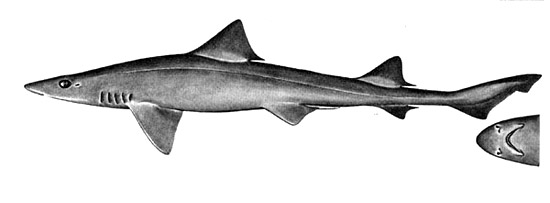
Distinctive Features
The body of the grey smooth-hound is similar to other sharks within the family Triakidae with a slender body, large oval eyes, low blunt teeth and a large second dorsal fin. In addition, the grey smooth-hound has a noticeable spiracle behind each eye. The dorsal fin originates slightly behind the free rear tip of the pectoral fins. The lower lobe of the caudal fin is usually indistinct.
Coloration
Color is generally gray or brown dorsally and lighter in color ventrally. There are no distinguishing stripes or spots. Albino specimens have been recorded.
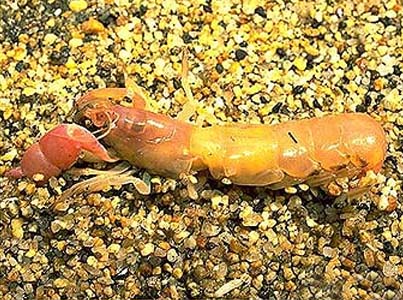
Dentition
The grey smooth-hound has asymmetric blunt cusp teeth. These numerous teeth make up the pavement-like jaw dentition.
Size, Age, and Growth
Sharks grow to an average size of 46 inches (116 cm) but can females can grow up to 64 inches (163 cm). The average lifespan is between 6-9 years.
Food Habits
The primary prey items of the M. californicus are ghost shrimp (Callianassa californiensis), inkeeper worms (Urechis caupo), cancrids, grapsids and small fish (ie. herring and midshipmen).
Reproduction
Grey smooth-hounds reproduce viviparously, producing live young rather than eggs. Females and males become reproductively mature at 29 inches (74 cm) and 24 inches (60 cm), respectively. Gestation generally requires 10-11 months and spawning most likely occurs in waters off of north-central California. Litter sizes range from 2-5 pups with an average length of 8-12 inches (20-30 cm).
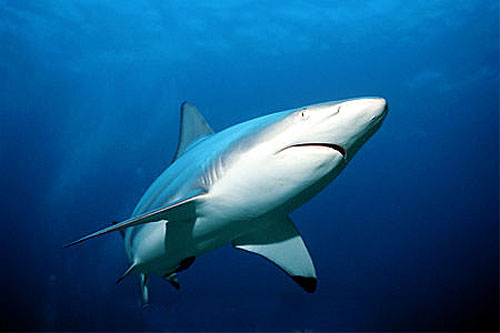
Predators
Potential predators of the grey smooth-hound are larger sharks, including the dusky shark (Carcharhinus obscurus), blacktip shark (Carcharhinus limbatus) and great hammerhead (Sphyrna mokarran).
Taxonomy
The grey smooth-hound was originally described as Mustelus californicus by Gill in 1864. The genus name Mustelus is derived from the Latin “mustela” meaning weasel. Californicus refers to the area where this shark is commonly found. There are no known synonyms used to refer to this species in past scientific literature.
Prepared by: Taylor Chapple